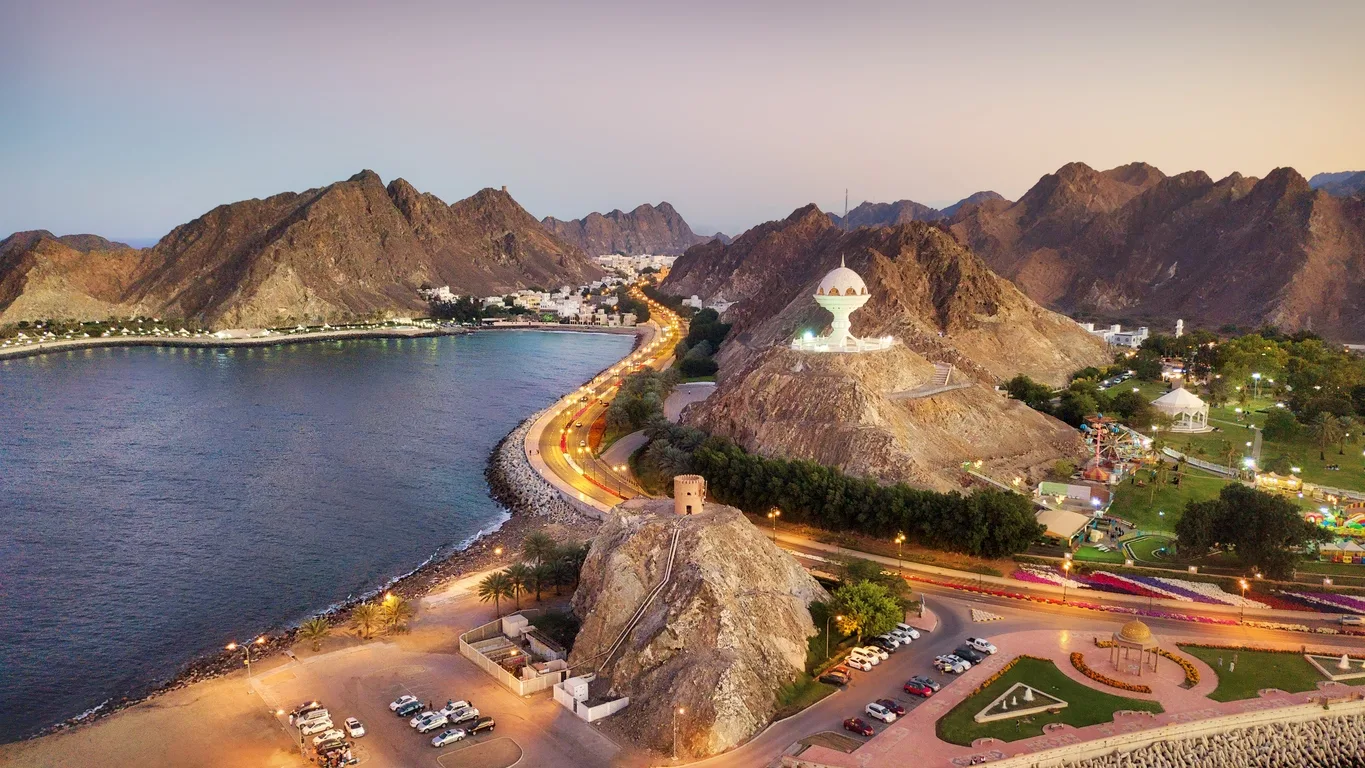Article Indexes:
#Muscat: The Sophisticated Capital
#Salalah: The Tropical Surprise
So you're planning a trip to Oman and you've got that classic traveler's dilemma: limited time, too many incredible places to see. I've been there, staring at the map, trying to decide between Muscat's gleaming marble and Salalah's misty mountains. Let me walk you through both cities, and then we'll figure out which one deserves your precious vacation days.
#Muscat: The Sophisticated Capital
What Makes Muscat Special
Muscat isn't your typical Middle Eastern capital. There are no skyscrapers here, instead, you'll find a city that's managed to modernize while keeping its soul intact. Everything is built low, finished in white and beige, creating this incredibly cohesive look against dramatic mountains and turquoise sea.
The city sprawls along the coast, connecting old fishing villages that have transformed into distinct neighborhoods. You've got Old Muscat with its forts, Mutrah with its famous souk, and modern Qurum with beaches and malls. It all flows together beautifully.
Customize Your Dream Vacation!
Get in touch with our local experts for an unforgettable journey.
Plan Your TripThe Must-See Attractions
- Sultan Qaboos Grand Mosque: I'm not exaggerating when I say this is one of the most beautiful mosques in the world. The main prayer hall features the world's second-largest hand-woven carpet and a massive Swarovski crystal chandelier. It's open to non-Muslims, and honestly, it's breathtaking.
- Mutrah Souq: The real deal. Ancient wooden doors, frankincense smoke, silver vendors, spice stalls, and the most overwhelming selection of colorful textiles you've ever seen. Unlike some "tourist souks," locals actually shop here. Get lost in the maze, bargain for silver khanjars, and breathe in centuries of trade history.
- Royal Opera House: Stunning even if you don't catch a performance. The architecture alone is worth the visit, showcasing Oman's commitment to arts and culture in a breathtaking building that blends traditional and contemporary design.
- National Museum: World-class museum telling Oman's story from ancient times through its maritime empire to the modern renaissance under Sultan Qaboos. This is where you'll truly understand the country's rich history and cultural heritage.
- Al Jalali and Al Mirani Forts: Twin Portuguese forts standing guard over Old Muscat's harbor. You can't enter them, but they're incredibly photogenic and you can explore the old town area with its blue-shuttered buildings and the Al Alam Palace.
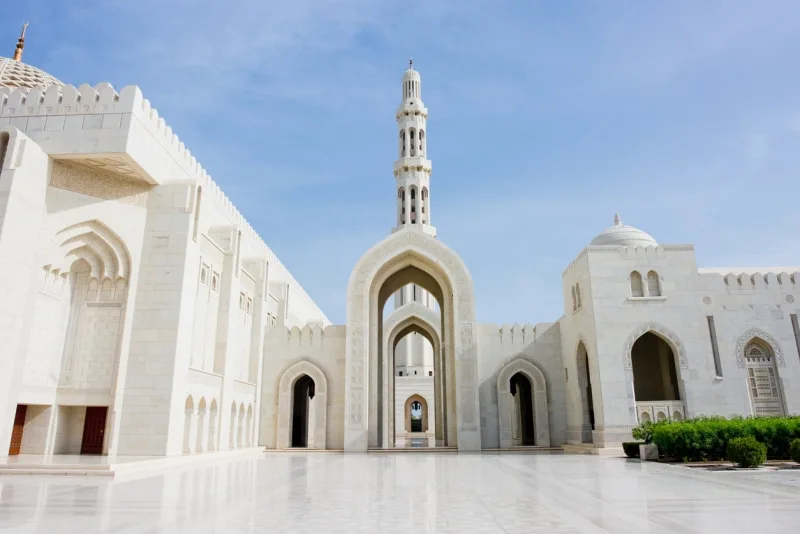
The Day Trip Possibilities
- Wadi Shab: About 90 minutes away, this stunning canyon offers a hike through pools where you can swim to a hidden waterfall cave. It's adventure and beauty rolled into one, and easily one of Oman's most photogenic spots.
- Bimmah Sinkhole: A gorgeous limestone crater filled with turquoise water where you can actually swim. Perfect for a quick stop and refreshing dip on your coastal drive.
- Ras Al Jinz Turtle Sanctuary: Watch endangered green turtles nesting at night in this protected reserve. It's genuinely moving to see these ancient creatures in their natural habitat, and the guided night tours are well-organized and respectful.
- Quriyat and Tiwi: Charming coastal villages along the way that showcase traditional Omani life, with date palm plantations, turquoise waters, and authentic local experiences away from the capital.
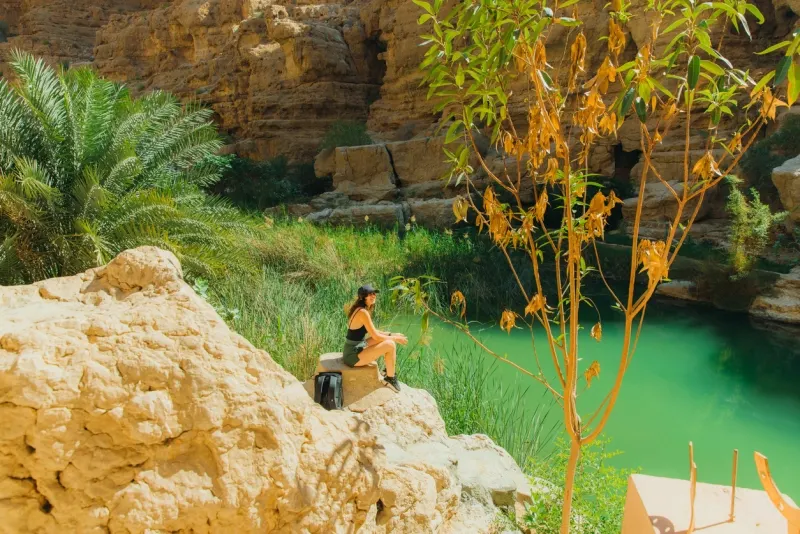
The Vibe and Practical Stuff
Muscat has that rare combination of being deeply traditional while feeling modern and easy to navigate. You'll see Omani men in their crisp white dishdashas and women in colorful abayas, but you'll also find excellent international restaurants, specialty coffee shops, and all the conveniences of a capital city.
The Corniche and Qurum Beach are perfect for sunset strolls. The Marina Bandar Al Rowdha offers boat trips. There's a growing arts scene, boutique hotels, and some seriously good restaurants serving everything from Omani shuwa to Italian pasta.
Getting around is straightforward with ride-sharing apps and taxis, though you'll want a rental car for day trips. The city feels safe, clean, and welcoming. It's hot from April to September, I mean seriously hot, like 100°F+ hot but winter months are absolutely perfect.
Explore our exclusive Oman travel packages and start planning the journey of a lifetime.
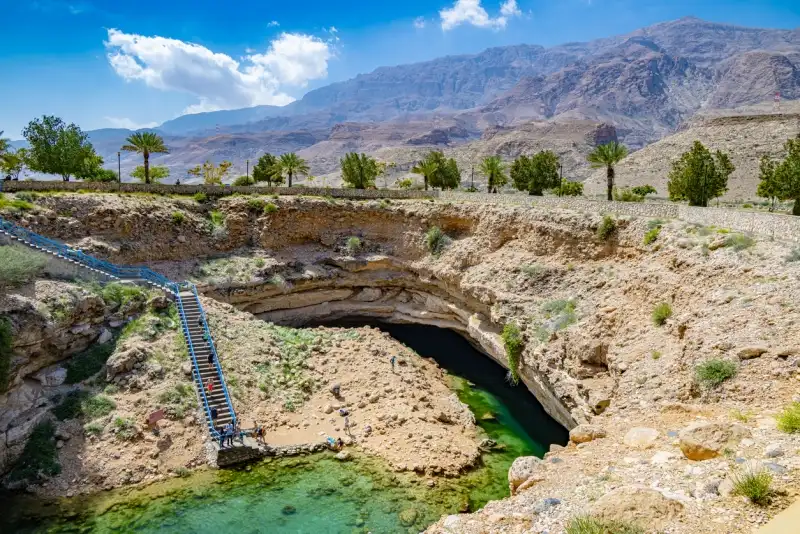
#Salalah: The Tropical Surprise
What Makes Salalah Different
Salalah is Oman's southern jewel, and it's nothing like what you'd expect from an Arabian Peninsula city. Located over 600 miles south of Muscat, this coastal city near the Yemen border has its own distinct identity, culture, and most famously its own climate.
While the rest of Arabia bakes in summer, Salalah gets the khareef monsoon from June to September. The mountains turn emerald green, waterfalls appear, mist blankets everything, and temperatures drop to a comfortable 70-80°F. It's so unusual that thousands of Gulf tourists flock here just to experience cool, green weather.
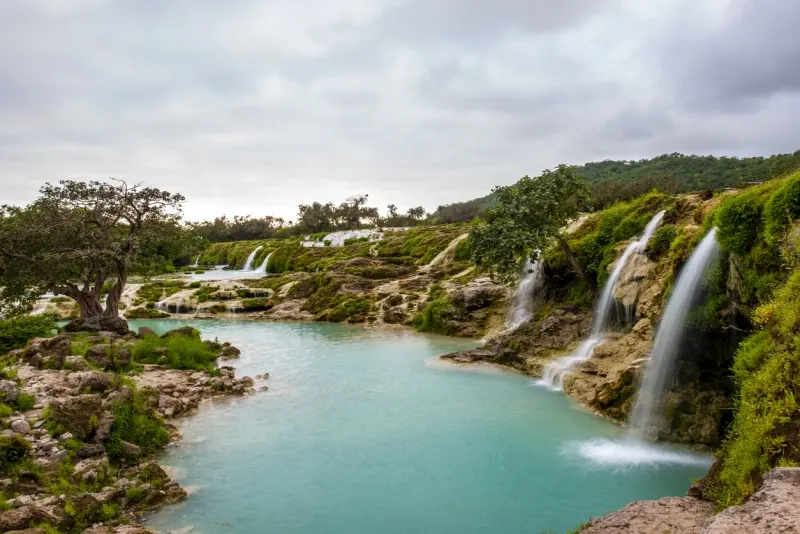
The Natural Attractions
- Beaches: Spectacular long, white-sand stretches that go on for miles with hardly anyone on them. Mughsail Beach features blowholes that shoot seawater high into the air, and the coastal drive is one of the most scenic in Arabia.
- Jebel Samhan Mountains: Dramatic peaks with viewpoints overlooking sheer cliffs dropping to the sea. During khareef, these mountains transform completely with waterfalls cascading down and vegetation exploding in green.
- Wadi Darbat: Magical during khareef with its waterfalls and lake surrounded by grazing camels. The whole valley becomes a lush paradise that feels transported from East Africa rather than Arabia.
- Frankincense Trees and Heritage Sites: The Dhofar region's frankincense groves have been producing aromatic resin for thousands of years. Visit the UNESCO-listed archaeological sites to see where this ancient trade began.
- The Empty Quarter (Rub' al Khali): Accessible from Salalah, standing at the edge of the world's largest sand desert with its towering dunes stretching endlessly is a humbling experience. Several tour operators offer overnight desert camping trips.
The Historical Side
- Al Baleed Archaeological Park: UNESCO World Heritage site featuring ruins of the ancient port that was crucial to the frankincense trade. The Museum of the Frankincense Land here is excellent, explaining how this region dominated the aromatic resin trade for millennia.
- Tomb of Prophet Ayoub (Job): Located on the mountain offering great views over Salalah. It's a pilgrimage site for many visitors and provides insight into the region's religious significance.
- Sumhuram: Another UNESCO site where you can see the old fort ruins and imagine the frankincense ships loading up centuries ago. The coastal setting makes it particularly atmospheric and photogenic.
The Authentic Experience
Salalah feels more authentically Omani and less cosmopolitan than Muscat. The pace is slower, people are incredibly friendly, and you're more likely to be invited for tea by a local. The souqs here are less touristy, Haffa Souq and Al Husn Souq sell frankincense, traditional clothing, and local goods to actual residents.
The food scene is more local too. You'll find great seafood, traditional Omani restaurants, and street food, but fewer international options than Muscat. It's not a drawback, it's just a different vibe. More authentic, more relaxed, more "this is how we actually live.
#When to Choose Muscat
- You're a first-time visitor to Oman. Muscat gives you the essential Omani experience with culture, history, and context. You'll understand the country better, see the key landmarks, and get that "I've been to Oman" experience. It's the logical introduction to the country.
- You have limited time (3-4 days). Muscat packs a lot into a small area. You can see major attractions, do a day trip or two, enjoy beaches, and experience Omani culture without spending half your trip in the car. Everything is relatively close and efficient.
- You want cultural attractions and museums. If you geek out over history, architecture, art, and museums, Muscat is your city. The concentration of cultural sites here is unmatched in Oman. You'll spend your days learning, exploring, and understanding rather than hiking.
- You're visiting April through September. While it's hot, Muscat remains functional in summer with air-conditioned attractions and evening activities. Salalah outside of khareef is brutally hot with less to do. If you can only visit during these months and it's not khareef time, stick with Muscat.
- You prefer city conveniences with your adventure. Want great restaurants, nice hotels, shopping options, and easy logistics alongside your exploration? Muscat delivers that perfect balance of adventure and comfort. You can kayak in the morning and have excellent sushi at night.
- You want diverse day trip options. The variety of day trips from Muscat—wadis, sinkholes, turtle watching, fishing villages, mountain drives is hard to beat. You can do something completely different every day without driving too far.
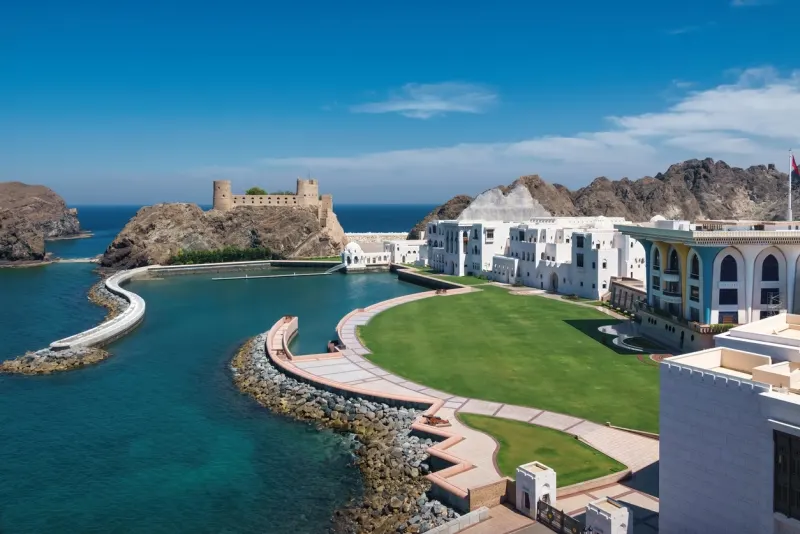
#When to Choose Salalah
- You're visiting during khareef season (June-September). This is non-negotiable. If you can visit during khareef, absolutely choose Salalah. You can see Muscat's mosques and forts anytime, but the monsoon transformation of Salalah is seasonal magic that only happens a few months per year. Book early though—everyone knows about this.
- Nature is your priority over culture. If you'd rather hike to waterfalls, lie on empty beaches, explore mountains, and stare at desert dunes than tour museums and palaces, Salalah is calling. It's an outdoor lover's paradise with incredible natural diversity.
- You want to avoid crowds and tourists. Outside of khareef season, Salalah is wonderfully quiet. You'll have beaches to yourself, authentic interactions with locals, and that off-the-beaten-path feeling even though it's actually quite developed. It's Oman without the tour buses.
- You have 5+ days to really explore. Salalah rewards taking your time. Attractions are spread out, the vibe is slower, and you'll want days to just exist in the mountains or on the beach. If you're not rushed, Salalah offers a more immersive, relaxed experience.
- You're after that authentic, local vibe. Salalah feels less international, more genuinely Omani. You'll interact more with locals going about daily life, eat more traditional food, and get a sense of real Oman beyond the tourist attractions.
- You love road trips and driving. The drives around Salalah are spectacular. If you enjoy driving coastal routes, mountain passes, and desert tracks, you'll love exploring the Dhofar region. Every journey is scenic, and having a car is part of the adventure.
- You're visiting in winter (November-March). This is the sweet spot for Salalah. Beautiful weather, no crowds, reasonable prices, and everything is accessible. The mountains are brown but still beautiful, beaches are perfect, and you'll have a wonderful, peaceful trip.
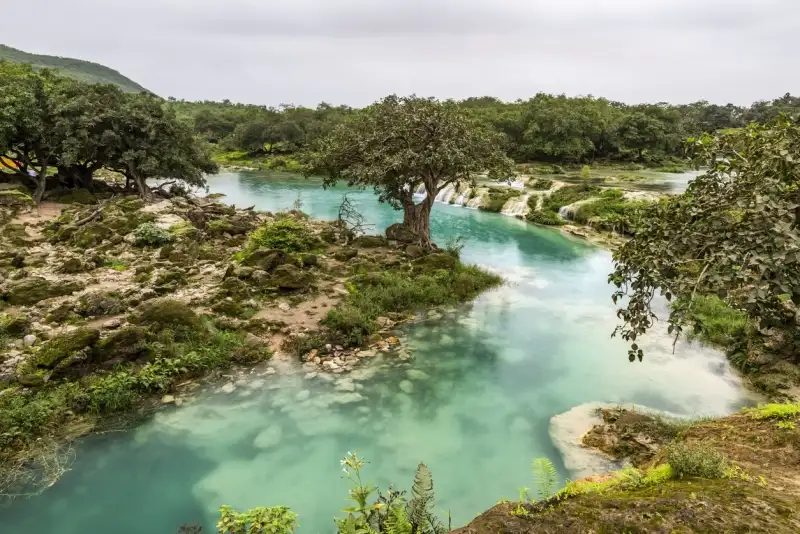
Can't Decide? Do Both
Here's the best news: a domestic flight between Muscat and Salalah takes 90 minutes and costs around $80-150. Multiple flights run daily. If you have a week or more, you absolutely can do both.
A smart itinerary might be: 3 days in Muscat covering the main sights and one day trip, then 4 days in Salalah exploring the nature and beaches. Or flip it depending on the season. You get the cultural context in Muscat and the natural beauty in Salalah—the complete Oman experience.
Even if you only have 5-6 days total, splitting them between both cities works. You'll spend one day basically traveling, but you'll see two completely different sides of this fascinating country.
So what's it going to be? The sophisticated cultural immersion of Muscat or the natural magic of Salalah?
Either choice leads to an incredible experience. Oman doesn't do disappointing, it just offers different flavors of wonderful. And here's the thing: you don't have to figure it all out alone. Many travelers find that booking Oman tours helps maximize their limited time, especially for day trips from Muscat or khareef season explorations in Salalah. Local guides know the best timing for turtle watching, the safest routes through wadis, and the hidden viewpoints that don't make it into guidebooks.
Muscat can be thoroughly explored in 3-4 days, covering all major attractions and day trips. Salalah deserves 4-5 days, especially during khareef season, as attractions are more spread out and the pace is slower. If you have a week, split your time between both cities.
Absolutely! While khareef (June-September) is Salalah's famous season, visiting October through May means fewer crowds, lower prices, and still-beautiful beaches and mountains. You'll miss the green transformation but gain a more peaceful, authentic experience.
Muscat is generally better for first-timers as it offers more cultural context about Oman's history, better infrastructure, and easier access to diverse attractions. It gives you the foundational "Oman experience" that makes the rest of the country more meaningful.
Yes, A 90-minute domestic flight connects the cities multiple times daily. A week-long trip could include 3-4 days in Muscat and 3-4 days in Salalah, giving you both the cultural and natural highlights of Oman.
Salalah is generally more affordable outside of khareef season, with lower accommodation and dining costs. Muscat's capital city status means higher prices year-round, especially for hotels and restaurants. However, during peak khareef (July-August), Salalah prices can triple.
For Muscat: November through March offers perfect weather (70-85°F). For Salalah: June through September for khareef's green magic, or November through March for warm, dry weather and empty beaches. Avoid both cities April-May when temperatures soar.
While Muscat has taxis and ride-sharing apps for getting around the city, you'll want a rental car for day trips to wadis and beaches. In Salalah, a car is almost essential as attractions are spread out and public transport is very limited. Both cities have good road infrastructure.
Related Articles
Keep the inspiration going with these handpicked travel reads.

